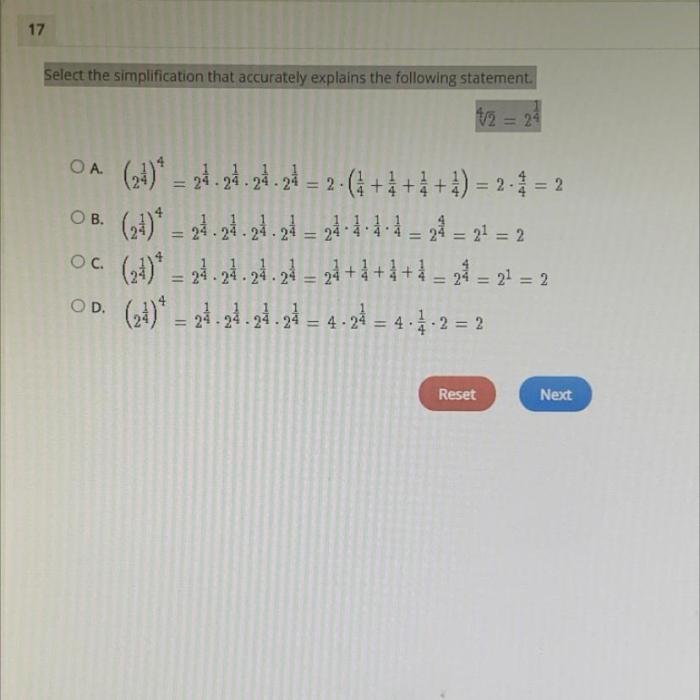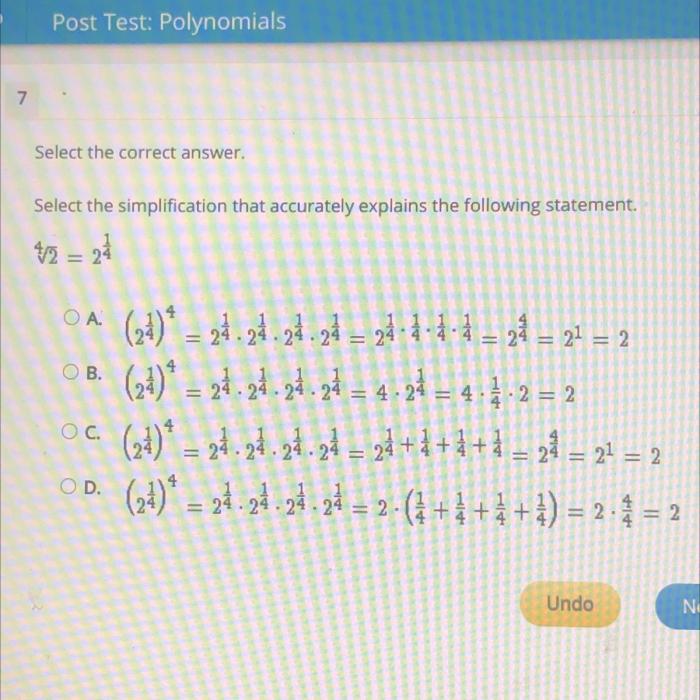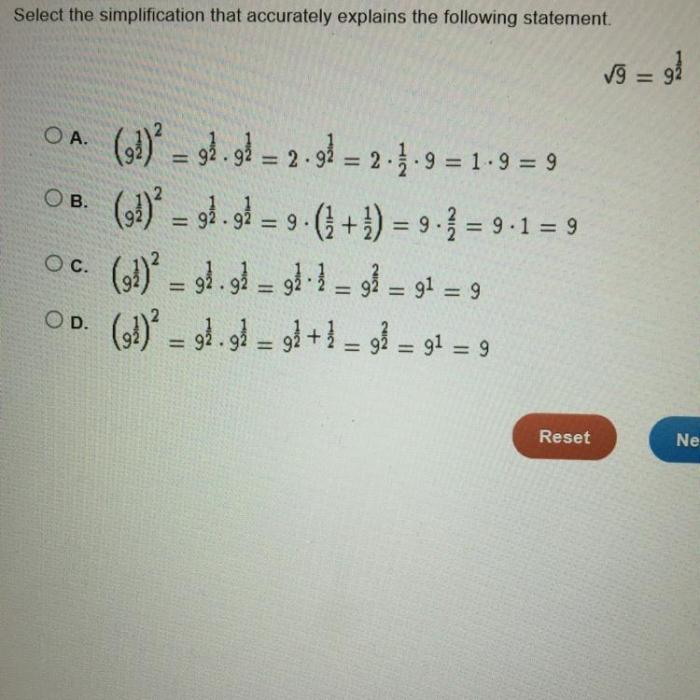Select the simplification that accurately explains the following statement – In the realm of communication, selecting the most accurate simplification for a given statement holds paramount importance. This process requires a meticulous examination of the original statement, careful consideration of the intended audience, and an understanding of the context in which it will be used.
By employing a systematic approach, we can ensure that our simplifications effectively convey the intended meaning while maintaining clarity and precision.
Selecting and Simplifying Complex Statements

Simplifying complex statements is crucial for effective communication and understanding. It involves breaking down intricate concepts into simpler terms, making them accessible to a broader audience. This article explores the importance of selecting the correct simplification and provides a step-by-step process to achieve it.
Importance of Selecting the Correct Simplification
Choosing an incorrect simplification can lead to misinterpretation, confusion, and potential harm. For example, simplifying medical instructions incorrectly could have severe consequences for patients’ health. In legal contexts, inaccurate simplifications can distort the intent of laws and affect individuals’ rights.
Key Elements to Consider
When selecting a simplification, consider the following:
- Context:The context of the statement influences the appropriate simplification.
- Audience:The level of detail and complexity should align with the intended audience’s knowledge and understanding.
- Complexity:The complexity of the statement determines the extent of simplification required.
Step-by-Step Process
To select an accurate simplification:
- Analyze the statement:Identify the key concepts and relationships within the statement.
- Identify potential simplifications:Brainstorm possible ways to simplify the statement.
- Evaluate simplifications:Assess each simplification against the criteria of accuracy, clarity, and effectiveness.
- Compare and select:Create a table comparing the strengths and weaknesses of different simplifications.
- Finalize the simplification:Choose the simplification that best meets the requirements of the context, audience, and complexity.
Visual Representation
The following flowchart illustrates the simplification process:
[Flowchart atau diagram yang menunjukkan langkah-langkah dalam proses seleksi penyederhanaan]
Demonstration, Select the simplification that accurately explains the following statement
Consider the statement: “The Earth’s gravitational force is directly proportional to its mass.”
Simplification:“The heavier the Earth, the stronger its gravity.”
This simplification meets the criteria of accuracy, clarity, and effectiveness. It conveys the essence of the original statement while being accessible to a general audience.
Q&A: Select The Simplification That Accurately Explains The Following Statement
What are the key elements to consider when selecting a simplification?
Context, level of detail required for the intended audience, and complexity of the original statement.
Why is it important to select the correct simplification?
Choosing an incorrect simplification can lead to misinterpretation, confusion, or ineffective communication.
What is the step-by-step process for selecting an accurate simplification?
Analyze the statement, identify potential simplifications, evaluate their strengths and weaknesses, and select the most appropriate one.

